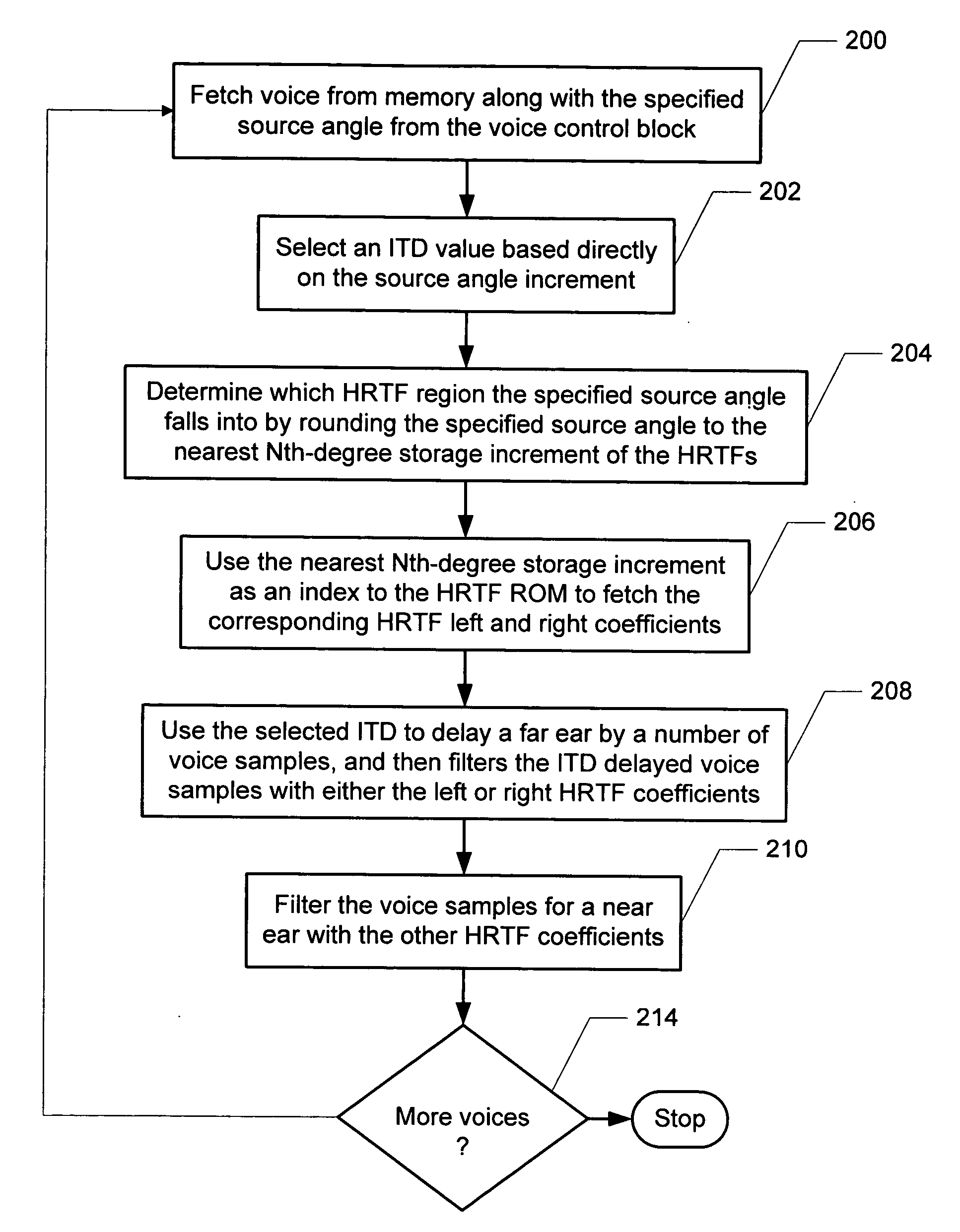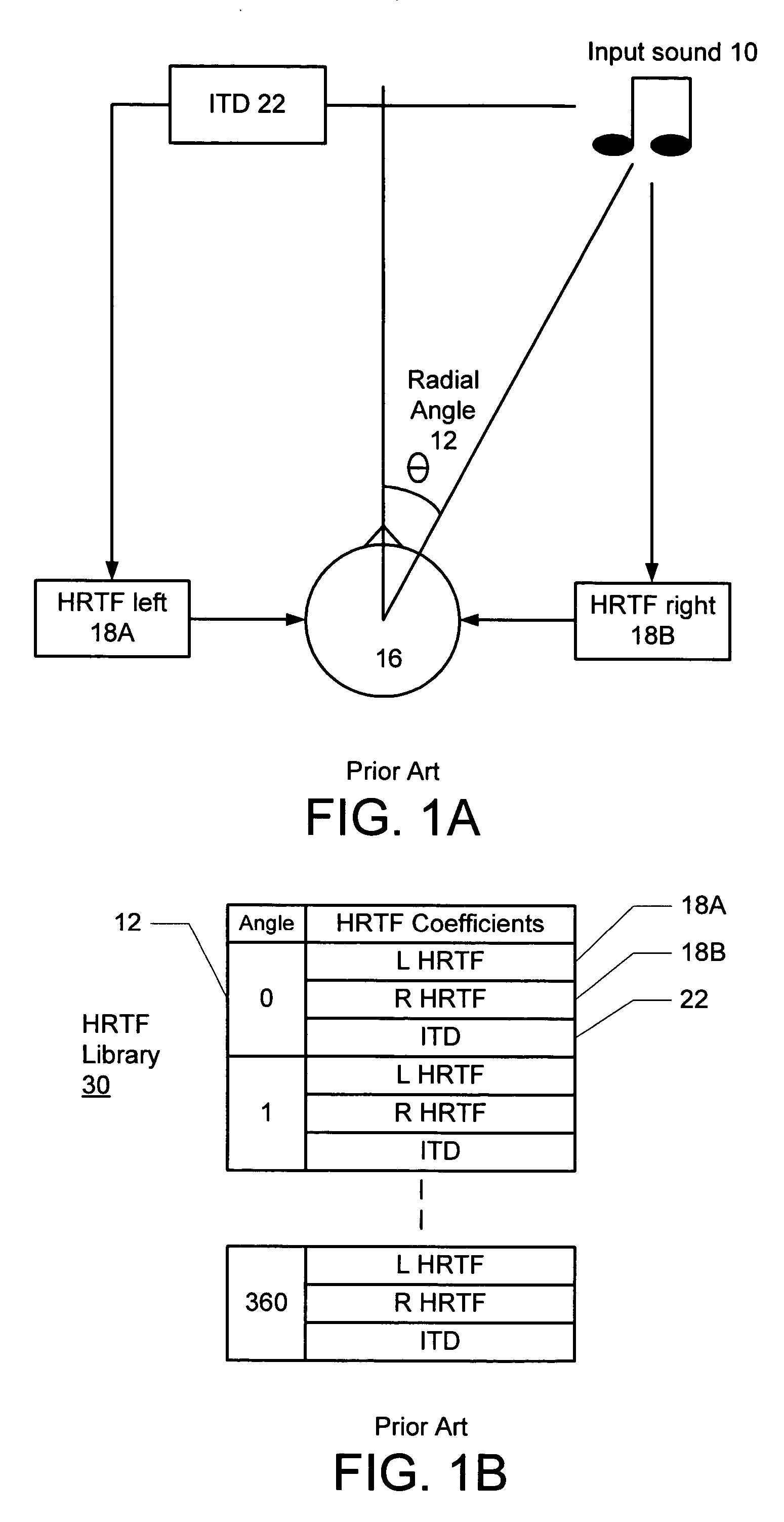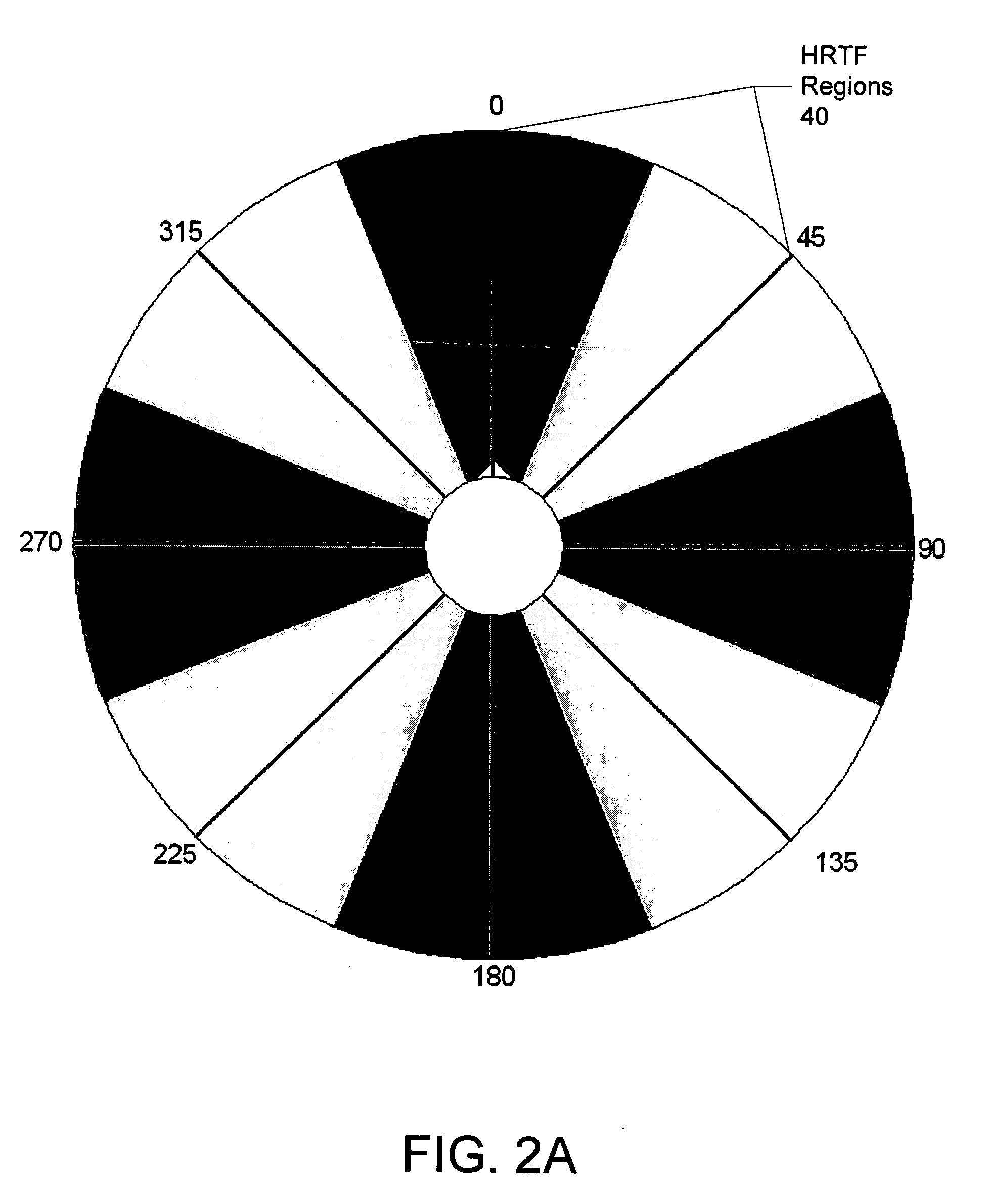Asymmetric HRTF/ITD storage for 3D sound positioning
a technology of asymmetric storage and 3d sound, applied in the field of sound processing, can solve the problems of large memory requirements, affecting the design, and not providing as many distinct positions, and achieve the effect of reducing the requirements of head related transfer function (hrtf) storag
- Summary
- Abstract
- Description
- Claims
- Application Information
AI Technical Summary
Benefits of technology
Problems solved by technology
Method used
Image
Examples
Embodiment Construction
[0019] The present invention relates to a method and system for reducing HRTF / ITD storage requirements for 3-D sound positioning. The following description is presented to enable one of ordinary skill in the art to make and use the invention and is provided in the context of a patent application and its requirements. Various modifications to the preferred embodiments and the generic principles and features described herein will be readily apparent to those skilled in the art. Thus, the present invention is not intended to be limited to the embodiments shown, but is to be accorded the widest scope consistent with the principles and features described herein.
[0020] Considering the ITD values 22 in some sound processors may be artificially inserted and represent a number of samples to delay the input sound to the contralateral ear by, the memory requirements for the ITD values 22 are almost negligible in comparison to the large amounts of data required for the HRTF coefficients.
[0021...
PUM
 Login to View More
Login to View More Abstract
Description
Claims
Application Information
 Login to View More
Login to View More - R&D
- Intellectual Property
- Life Sciences
- Materials
- Tech Scout
- Unparalleled Data Quality
- Higher Quality Content
- 60% Fewer Hallucinations
Browse by: Latest US Patents, China's latest patents, Technical Efficacy Thesaurus, Application Domain, Technology Topic, Popular Technical Reports.
© 2025 PatSnap. All rights reserved.Legal|Privacy policy|Modern Slavery Act Transparency Statement|Sitemap|About US| Contact US: help@patsnap.com



